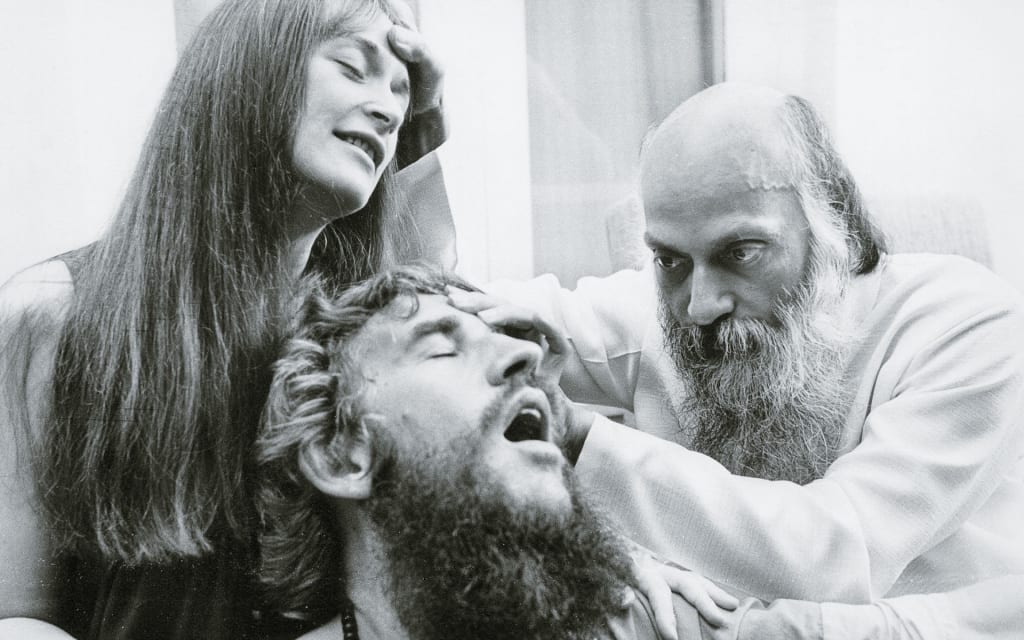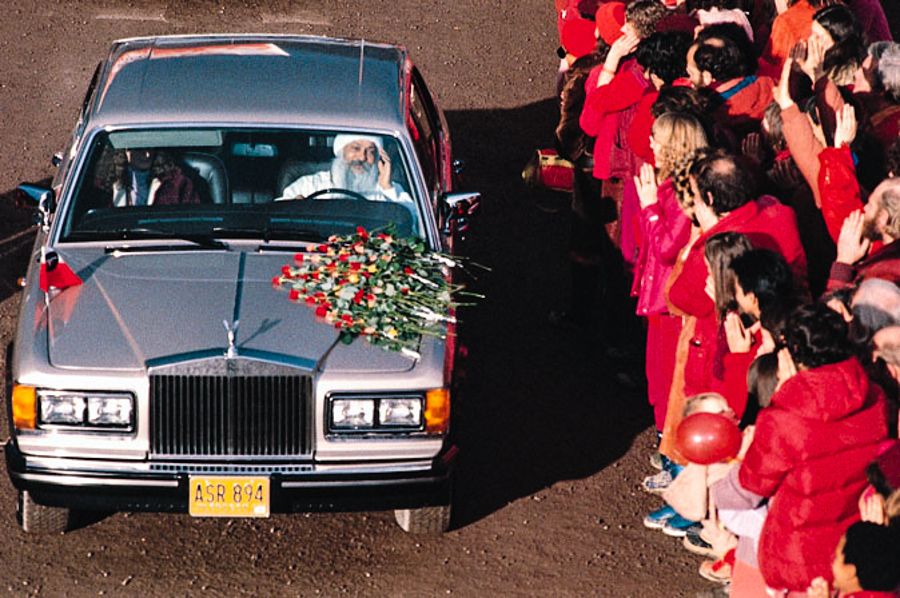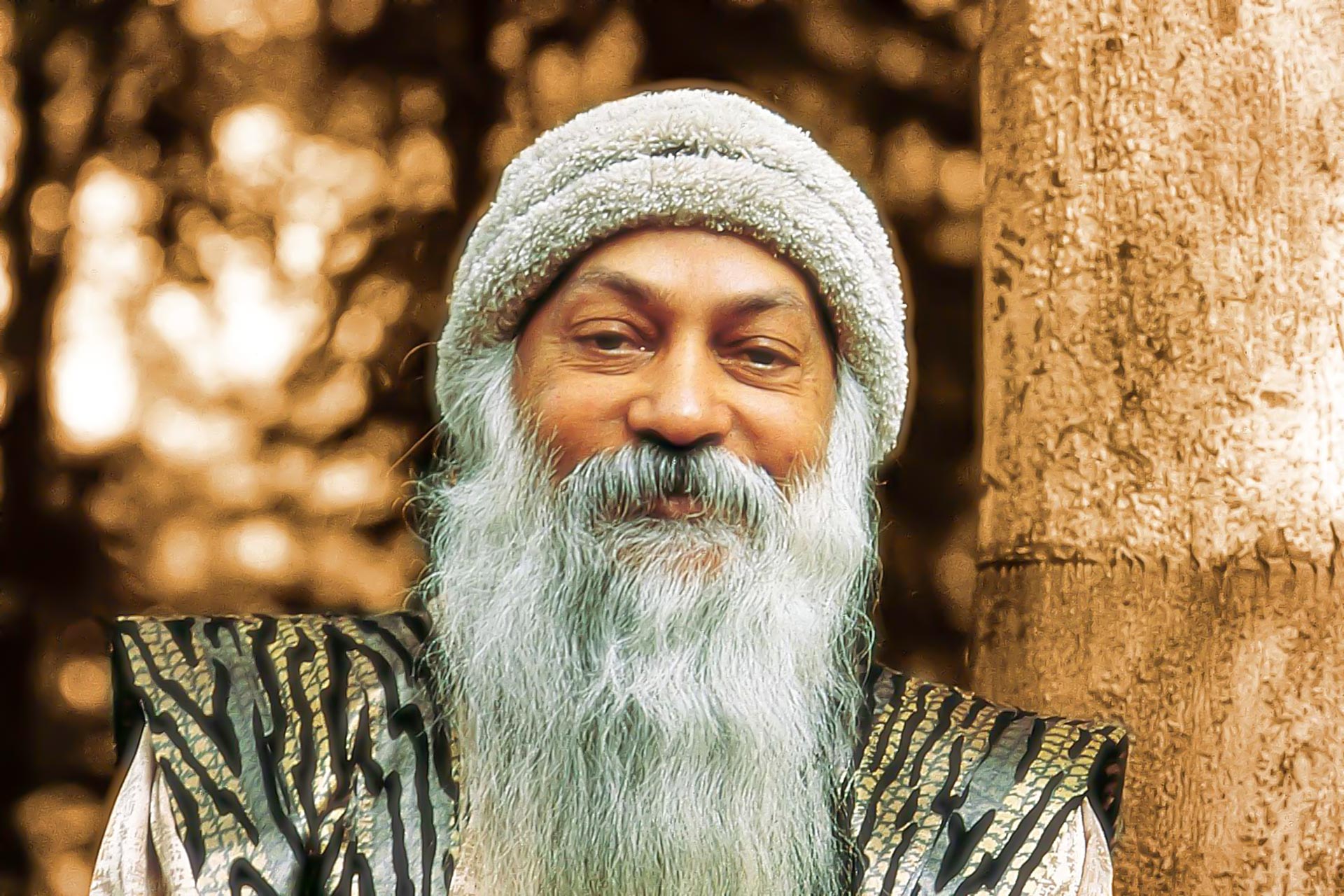
While Osho was considered the second most ‘enlightened’ person on earth after Buddha, his name was also involved in many serious scandals such as claims of sexual harassment, tax evasion, attempted murder and terror attack.
On the one hand, we see a man who is the source of countless words of wisdom like: “You’re what you love. Love is alchemy. Never love the wrong thing because it’ll transform you. Nothing is as transformative as love. Love things that can take you higher, to the climax. Love things that are beyond you*”. On the other hand, the same man insulted her secretary who ran the Rajneesh cult for years by saying things like “She did all these because I didn’t have sex with her. She did not prove to be a woman, she proved to be a perfect bitch.” Osho! Which Osho?
For some, he’s an angel with wings broken by people, and for others, he’s a devil pretending to be an angel! Osho! Which Osho?
Who’s Osho? Is Osho, really “Osho”? What’s Osho’s real name? His real name was Chandra Mohan Jain, but he started using the name “Acharya Rajneesh” starting from the 1960s (Acharya means “teacher/professor”, and Rajneesh is a nickname he acquired in childhood, meaning “lord of the night”). In the 1970s and 1980s, he started using the name Bhagwan (blessed) Shree Rajneesh. When the commune he had founded for his cult in Antelope (Wasco County, Oregon, USA) was destroyed after severe scandals, he returned to his hometown in India to make a new start and chose the name “Osho”, which means “teacher” in Japanese. Imagine a guru who caused controversies even with his name! Although he is often referred to as the ‘Lord of the Night’ (Rajneesh) and ‘blessed one’ (Bhagwan) throughout his life, I will use “Osho” in this article.
Osho Against Everything!
Let’s go to the very beginning… Osho was born in Kuchwada, a small village Bhopal, India, during the last days of 1931. As he would always tell, he was enlightened after a mystical moment he experienced while sitting under a tree in the Garden of Bhanvartal (Jabalpur), at the age of 21. Starting from his childhood he was interested in philosophy and the sense of the “self”. Although he cared about his revelations more than anything he learned, he studied philosophy at university. He carefully studied every philosophical movement including ancient Greek philosophers, mystical Sufis, existentialists, and enlighteners. That characteristic of him would be what distinguished him from other gurus. In 1958, he started teaching philosophy at Jabalpur University. During the same period, he also began to travel all over India and give speeches. He was a very good speaker and before long he started to receive many invitations from all over the country. At first, he was identified with socialism but later on, socialism and communism became the top two ideologies most harshly criticized by him. The country’s spiritual leader Gandhi was also among the people he criticized. He frequently described Gandhi as a “masochist who worshipped poverty”. Although he never really apologized for his words about Gandhi, he displayed signs of remorse. However, those bold statements of him were already noted. He also criticized religions, the clergy, capitalism, and more. He opposed to almost all ideologies. An anarchist, a provocateur was born out of India. Furthermore, he was an advocate of free sex.
Osho was getting ready to shed his own light(!) when he said “People have two choices in their lives: either living according to the commands of others, bigots and moralists, or living according to their own light**”.

Wealthy And Loyal Followers
He also offered formulae for liberating India from its backwardness: “capitalism, science, modern technology and birth control”.
He most frequently fought with religions and the clergy. He was incessantly stirring up controversy with his contradictory rhetorics while gathering loyal supporters for himself. In those difficult years of the Cold War, which emerged from the power struggle between communism and capitalism in general terms, he was able to attract wealthy business people and traders in India thanks to his contradictory rhetorics. These rich people who gathered around him because of his anti-socialist and anti-communist rhetoric loosened their purse strings.

The foundations of those famous camps were laid in 1962. He began organizing short-term and long-term (3-10 days) meditation camps. He left his undergraduate studies in 1968. In the lecture series he started the same year (later published as “Sex Matters: From Sex to Superconsciousness”***), he made a call to Hindu leaders for free sex and thus became known as the “Sex Guru”. He frequently said “sex is a sacred experience” and received great applause for this. He once even described meditation as “multiple orgasms”.
His famous “Osho Dynamic Meditation” started to be practiced in the early 1970s. This one-hour-long meditation consisting of five stages**** began to attract intellectual and wealthy Europeans and Americans in search of meaning to India. From this aspect, Osho is one of the pioneers who transferred Indian mysticism to the West by modernizing it. His camps were also a center of attraction for hippies, who were scattered around the world looking for a new place to see.
There’s Something Going On In This Ashram
His movement was known as “sannyasins”. He lived in Mumbai from 1970 to 1974. The donations he raised thanks to his first secretary helped him settle there. This was also a kind of institutionalization. However, no matter how enlightened this holy man was, the air quality in Mumbai did not do good for him and as a result, he developed diabetes, asthma, and countless allergies. Thus he moved to Koregaon Park, Pune and there he opened his ashram (a kind of monastery used for seclusion and education). He had bought the ashram thanks to a Greek prodigal follower. After that point, he started to attract more donations and Western visitors than ever before. He continued his activities in this ashram until 1981. Since it was used as a venue for meditation events, therapies and as a guest house, the ashram began to generate considerable income in addition to donations. His disciples wore maroon robes and some of them had sold everything they had in Europe before settling there. There were also families who brought their children along and settled in the ashram, but there was no room for a family unit in the ashram.

Some therapy groups in the ashram were experimental and allowed a certain degree of physical aggression and sexual intercourse among participants. News of injuries appeared in the press after violent therapies and group sex experiences. Some people even entered the ashram under the guise of a disciple to spread videos of crazy orgies experienced in the ashram. After criticizing the violence applied in therapies, therapist Richard Price was locked in a room for eight hours by disciples armed with wooden weapons and he got kicked out of the ashram with a broken arm. Bernard Gunther wrote a book named “Dying for Enlightenment”, featuring photographs from Pune.
Osho was constantly experiencing tensions with authorities, while his ashram was constantly appearing in the press with various types of extremism. Allegations claiming that he was a CIA agent would spread every day. His second secretary Ma Anand Sheela was in charge of his affairs during those days. Hosting 30 thousand visitors a year, the ashram had grown financially very strong. But those who came there would no longer hear Osho’s voice because in 1981 he decided to enter a three-and-a-half-year long public silence. The ashram continued to be filled with visitors though.
The movement, which was not much welcomed by the Indian government, was also arousing negative reactions in the country. When the government started to refuse issuing visas to foreign visitors who wished to visit his ashram, Osho decided to leave the country. If the disciples couldn’t come to India, their leader would build another roof for them. It’s said that this was her secretary Sheela’s decision, but is it really possible that she forced the mighty leader of a cult to leave his country? After incessant tensions, Osho moved to the USA with his disciples.
A Step Up To Become The “Rolls Royce Guru”
This part of Osho’s life has been handled in great detail in the much-talked-about documentary series “Wild Wild Country”. I really recommend it.
Although Osho went to the United States on a tourist visa in 1981, it seems that this was for medical purposes. He stayed at the Rajneeshee center in New Jersey for months. He was examined by many doctors, including those who were his disciples. There were doctors who came even from London to examine and treat him. The lord of the night was diagnosed with a prolapsed disc. His secretary Sheela publicly announced that if Osho remained in India, he was at risk of death and had to stay in the United States to undergo treatment and, if necessary, surgery.

In the meantime, his new commune was established in Antelope, a city with a total population of 50 people. His cult, which never appealed to the poor people of India but attracted the rich in the West instead, had finally arrived at the place it was supposed to be. As the owner of 93 Rolls Royce cars, he started to be known as the “Rolls Royce Guru”. He was also known for his fondness for expensive gifts, such as diamond-studded luxury watches and pearl-embellished skullcaps. Long before, he had coined a concept called “Zorba the Buddha” to describe his aim to create a new human being who did not avoid the pleasures of life, like the Greek Zorba, and who also was enlightened like the Buddha.
This camp was also the scene of many scandals. Feeling disturbed by thousands of weird people in maroon robes, the residents of Antelope objected to the cult’s presence in their town, and the cult, in return bought their properties. The cult coveted the rule of the city. During the local elections, the members of the commune brought thousands of homeless people from various US states so that they could vote in their favor. They were also accused of trying to add poison to the mains water. Later on, Osho said that this terrible act was Sheela’s idea. Their hotel in the commune was bombed and the commune started to get armed in response. His neighbors were horrified at seeing people in maroon robes wandering in and around the entire commune with automatic rifles. It was later revealed that the cult had also wiretapped many people without permission for years.
Conflicts within the cult brought the commune to an end in a few years. Sheela and her small gang tried to murder Osho’s doctor and his wife, who they claimed were trying to kill Osho. She was officially convicted guilty for this attempt. After this failed attempt at murder, Sheela fled to Germany with her small gang.
After decades of teachings, seclusion and enlightenment, you would expect a guru to behave a little bit virtuously and calmly and, as today’s popular statement puts it, to say that “everything happens for a reason”. But instead, Osho verbalizes his hatred for Sheela by calling her a “perfect bitch”.
Following this scandal, Osho was arrested for violating immigration laws and he was imposed a fine. He agreed with the authorities to leave the United States and returned to Pune in 1985. When he died in 1990, he was only 58 years old. Many of his followers still believe that his death was due to poisoning by the CIA or other secret services. He chose the name “Osho” to make a clean start when he returned to India and used it only for the last 5 years of his life.
Osho developed great ideas about life and existence in his books and adapted Eastern mysticism to the West. He was very smart but scandals never ceased throughout his life. Virtues one would expect to see in a guru, such as patience, respect, carefully selected words, humility, submission, killing the ego, not being deceived by the mortal world, controlling the soul, avoiding the extremes, balance, and not being tempted by worldly wealth did not exist in him. Despite supposedly destroying social norms and social contracts, he got red carpets and flowers laid on his way, sat on ostentatious armchairs, wore pearl-embellished skullcaps, bought diamond-studded watches, and made people bend their knee in front of him to kiss his skirt. It must be an irony of fate that he is called a charlatan addicted to sex, luxury, and glamour instead of a Modern Buddha as it was initially expected.
The Osho Meditation Centre, which is still open in Pune, continues to welcome thousands of visitors every year and provide huge profit. People still perform rituals and meditations in front of Osho’s empty seat in Osho’s white marble-paved house.
Maybe the best move is to benefit from some of his ideas and insights, but not to consider him a holy person. Just as we should not expect a great character from a poet who wrote beautiful poems.
* Osho Therapy; Svagito R. Liebermeister
** Moral, Immoral, Amoral: What Is Right and What Is Wrong? Osho
*** Osho’s bestseller. None of his books were actually written by himself. All of them were compiled from his speeches.
**** Osho said that he designed this meditation scientifically. Dynamic: Effort and Meditation: Silence. The first three episodes last 10 minutes each: Chaotic Breathing, Exploding, and the “Hoo” mantra. The last two episodes last 15 minutes each: Silence and Celebration.


